When we ran our 2022 SHOT Show Roundup article, one of the companies we highlighted was RevUp Action, which was promoting a replacement hammer design for Smith & Wesson revolvers, with frame-mounted firing pins, that would dramatically change the double action trigger pull. The idea was very intriguing, so we arranged for RevolverGuy to get a pre-production sample of the RevUp Action hammer for test and evaluation, and we’re now ready to report on our findings.
EVOLUTION
Warren Moore is the creator of the RevUp Action hammer, and has a patent pending on this unique design. Moore explains that, “the basic design of revolver hammers has not changed since 1909, when Charles Stone introduced a shifting point of engagement between the hammer and the trigger.” While he acknowledges strides have been made to improve hammers since Stone’s time, Moore argues that the scope of these changes has been limited. Beyond lightening hammers, and improving the way they are manufactured, Moore says little attention has been paid to improving the design and operation of this critical firearm component.
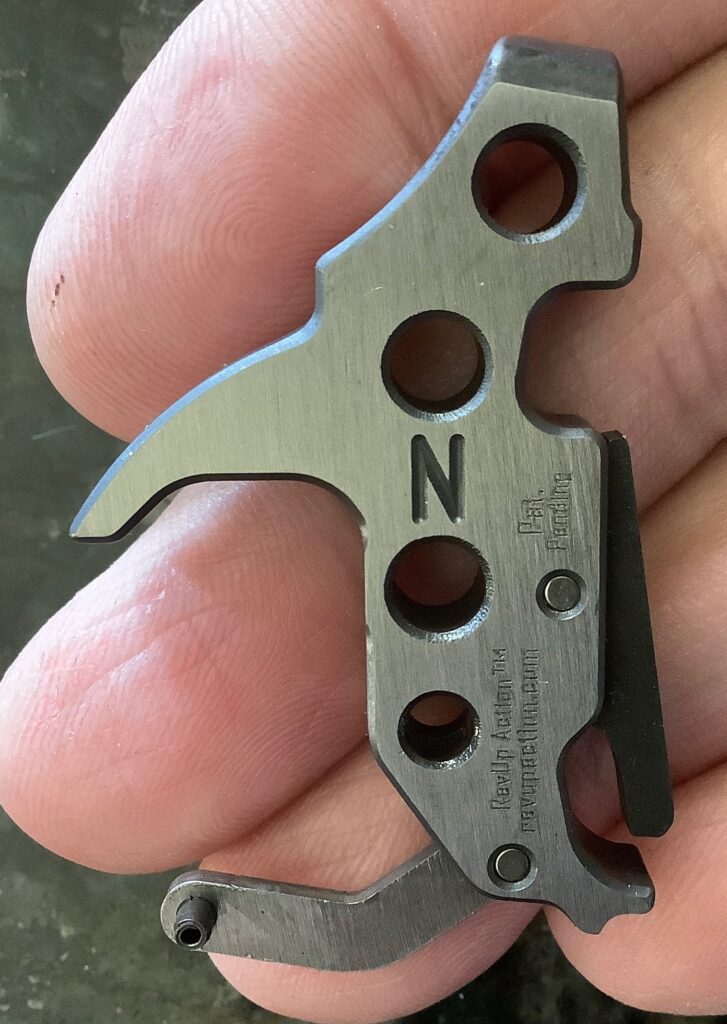
The RevUp Action hammer is his attempt to remedy that situation. With the RevUp Action hammer, Moore has redesigned the way that the hammer interacts with the trigger, sear, and rebound slide, to create a double action pull that is not only lighter, but radically different from any that came before.
CHARTING FORCE
In the traditional Smith & Wesson action, the weight of the trigger pull sharply increases as the trigger is drawn to the rear, until a peak is achieved, then levels off for a while. As the trigger pull continues, the weight of pull increases again for the second stage, then decreases a bit (like hitting a “speed bump” in the road), just before sear release.
In this system, the trigger nears its peak weight of pull after moving only about 10% of its rearward travel distance, and peaks at around 60% of its rearward travel distance.
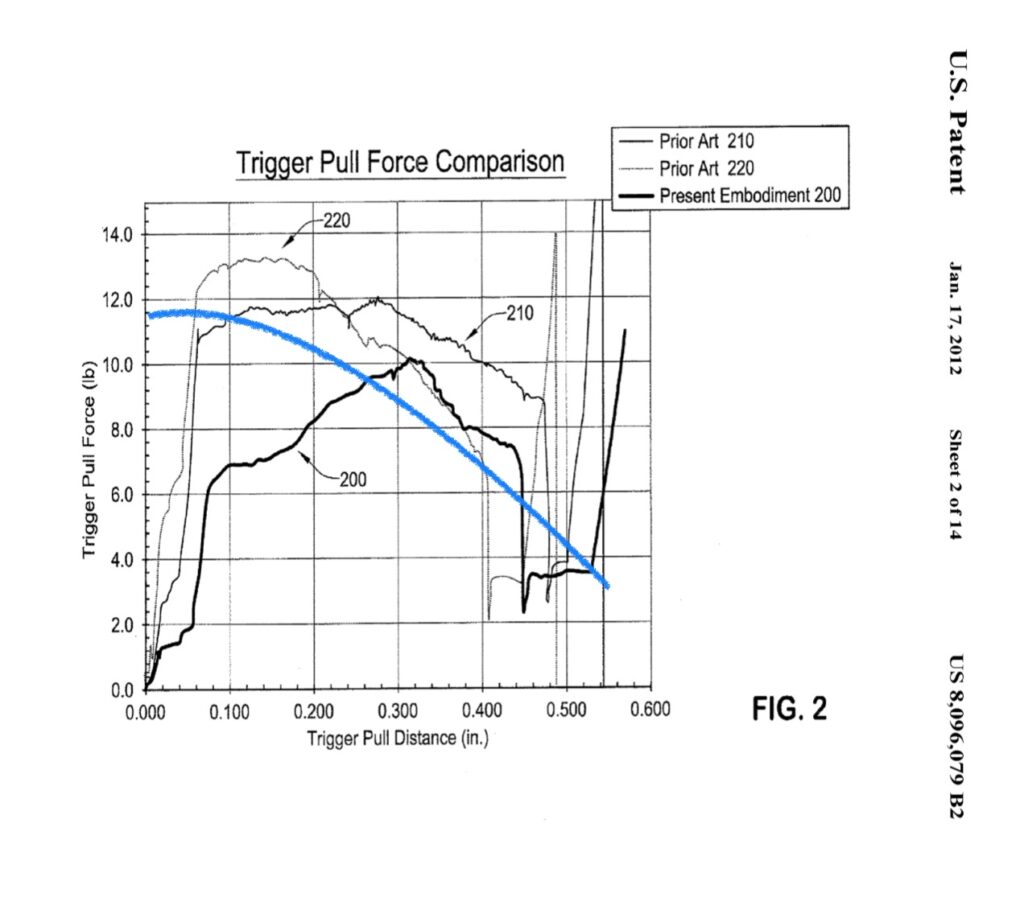
Moore’s redesign of the S&W hammer fundamentally changes this relationship, however. Instead of starting low, and quickly ramping up to near-peak weight in the first bit of trigger movement, Moore’s double action hammer starts out at its peak pull weight, then decreases as the trigger is pulled to the rear. The pull weight does not build as the trigger moves to the rear, but instead decreases to a weight equal that of the single action pull weight, which is driven by the strength of the rebound spring. Moore advertises that this final weight can vary from 2.5 to 5 pounds, depending on the strength of the rebound spring.
CONCEPT
Moore’s RevUp Action hammer is aimed at the competition and recreational target shooter. Its purpose is to allow these shooters to achieve the lightest possible double action pull weight, to enhance their accuracy potential in formal and informal competition.
As such, the RevUp Action hammer does not have a single action capability. It only operates in double action mode, in its present form, but Moore advises he may incorporate a single action capability at a later time.
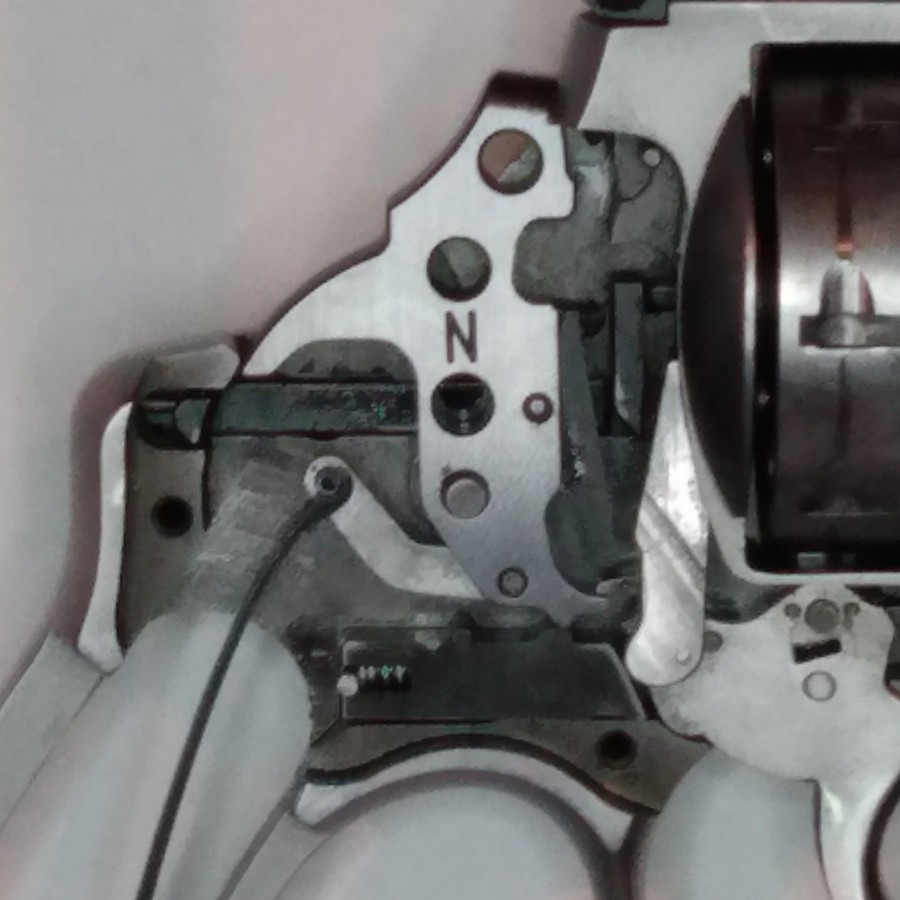
It’s Moore’s intent that the user of a RevUp Action hammer will manipulate the rebound slide spring weight to maximize the effect of the hammer’s redesigned geometry. As such, each of his hammer kits includes a set of three rebound springs that are successively lighter than the OEM spring.
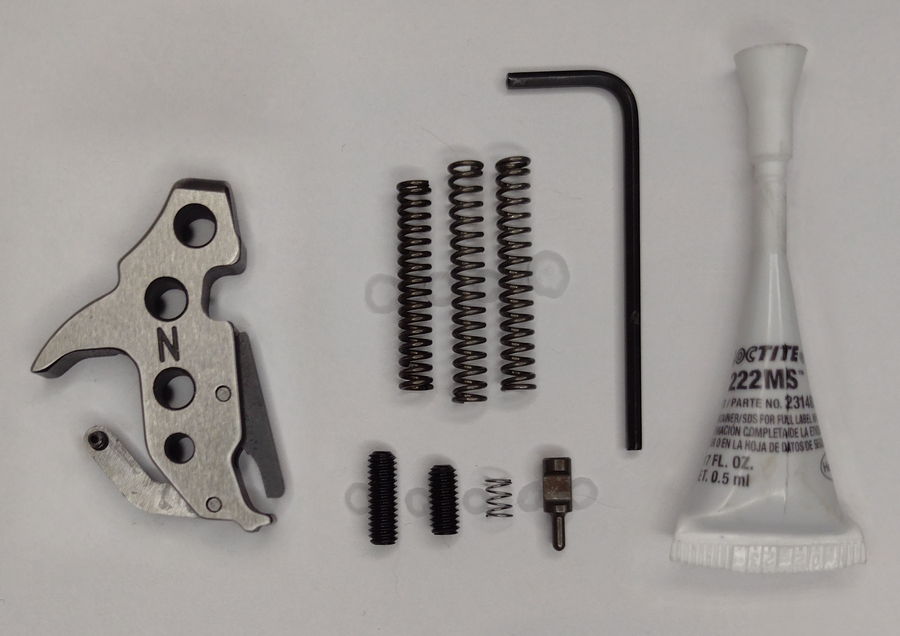
With careful substitution of these springs, and manipulation of the strain screw (something we never advise on a self-defense gun), Moore says that the user will be able to tailor the action to achieve the lightest possible pull weight that still reliably ignites the shooter’s primers of choice.
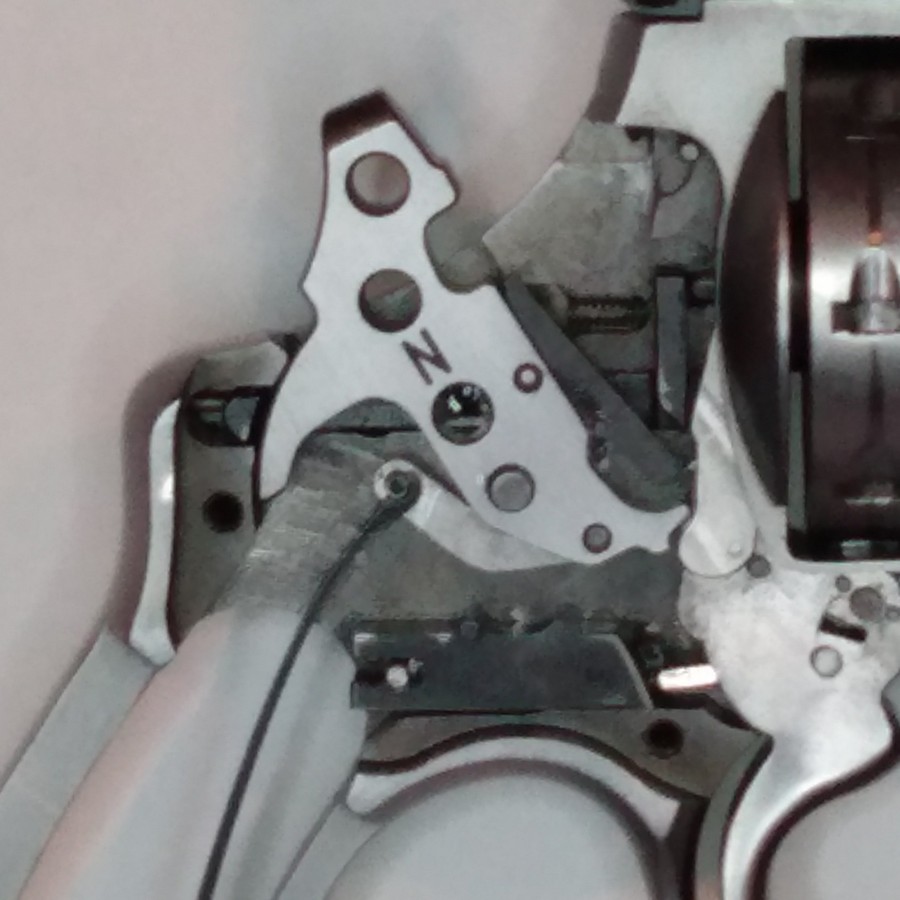
A video on the RevUp Action website illustrates what can be achieved through this effort. The sample gun in the video is set up for Federal primers, and boasts a double action trigger pull that starts in the vicinity of only seven pounds, and terminates around two pounds, just before sear release. This is achieved through careful selection of the rebound slide spring weight, and shortening, or backing out, the strain screw.
OUR SPIN
We think that’s pretty phenomenal, but since our interests here at RevolverGuy lean more towards duty and defensive use, we were interested to see how the RevUp Action hammer would perform with a stock, OEM rebound spring and a full-length, properly tightened, OEM strain screw. What results could we hope to achieve with just a simple hammer swap, leaving the other parts alone? Could we achieve a duty-grade action, which would reliably ignite a variety of primers?
To answer those questions, we requested some T&E samples from RevUp Action, and had them sent to veteran law enforcement armorer and trainer, Dean Caputo.
TESTING
Dean’s test of the RevUp Action hammer involved three samples—two hammers for N-Frames, and one hammer for a K-Frame. The N-Frame samples were mature prototypes that looked very much like the final production form, but the K-Frame sample was an early prototype that still needed some work.
Moore advised us ahead of time that the K-Frame hammer was still in development, but he was willing to send the rough prototype for limited T&E, to get our feedback. We had hoped it would perform, despite the clear warning, but unfortunately, Moore’s assessment of the K-Frame hammer was correct. It wouldn’t reset after the trigger pull in the S&W Model 66-8 that it was tested in, so it was quickly abandoned in favor of testing the more refined N-Frame samples.1

The N-Frame hammers were installed in a pair of N-Frame guns—a Heritage Series Model of 1917 remake in .45 ACP, and a Model 327, in .357 Magnum.
HERITAGE SERIES MODEL OF 1917 RESULTS
The Model of 1917 revolver had a double action pull weight of 14-15 pounds with the OEM hammer and springs installed.

When the firing pin length was measured, it was determined to be slightly undersized, at 0.488 inches, compared to the minimum OEM standard of 0.495 inches. Sometimes a firing pin will wear as it is used, or will be newly delivered slightly below factory specs, but regardless of the cause, a shorter pin has the potential to affect reliable ignition in the gun, so it was important to measure it at the start of the test.
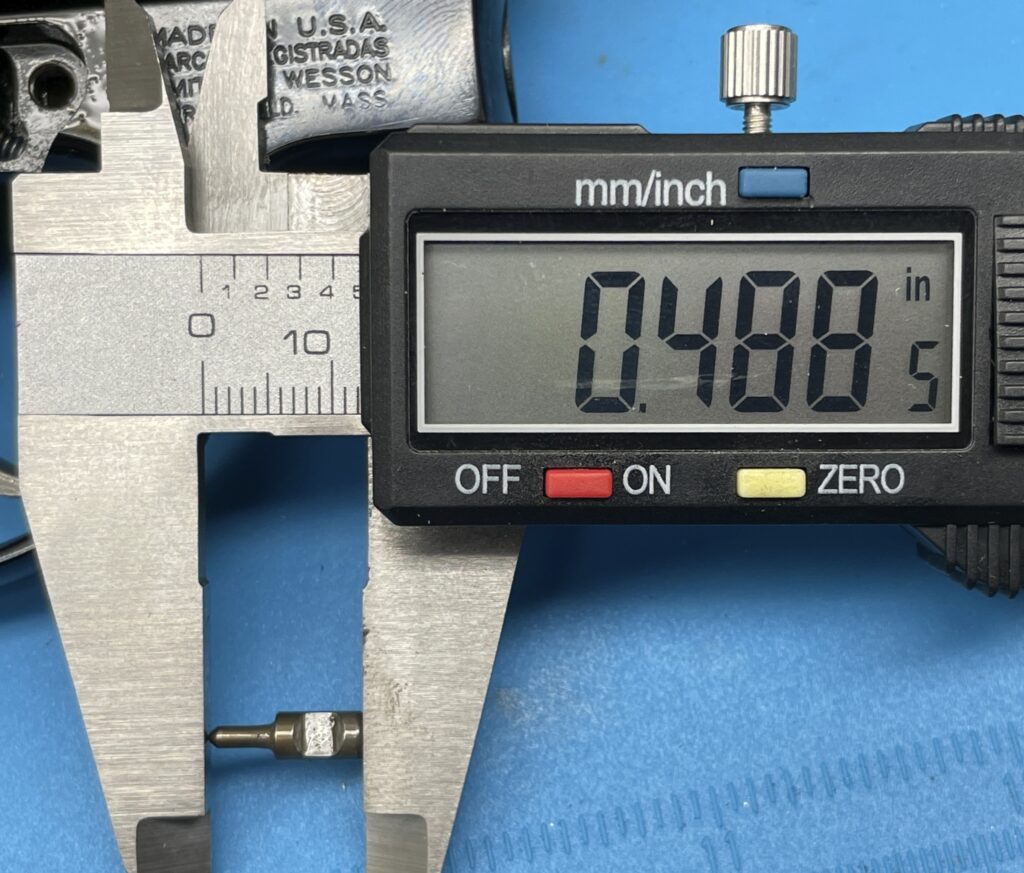
When the RevUp Action hammer was substituted in the Model of 1917, the peak double action pull weight dropped to just over 10 pounds! Remember, because of the unique quality of the RevUp Action hammer, this is where the double action pull started on the gun, and as the trigger was pulled further to the rear, the pull weight decreased to approximately 5 – 6 pounds, just before sear release.
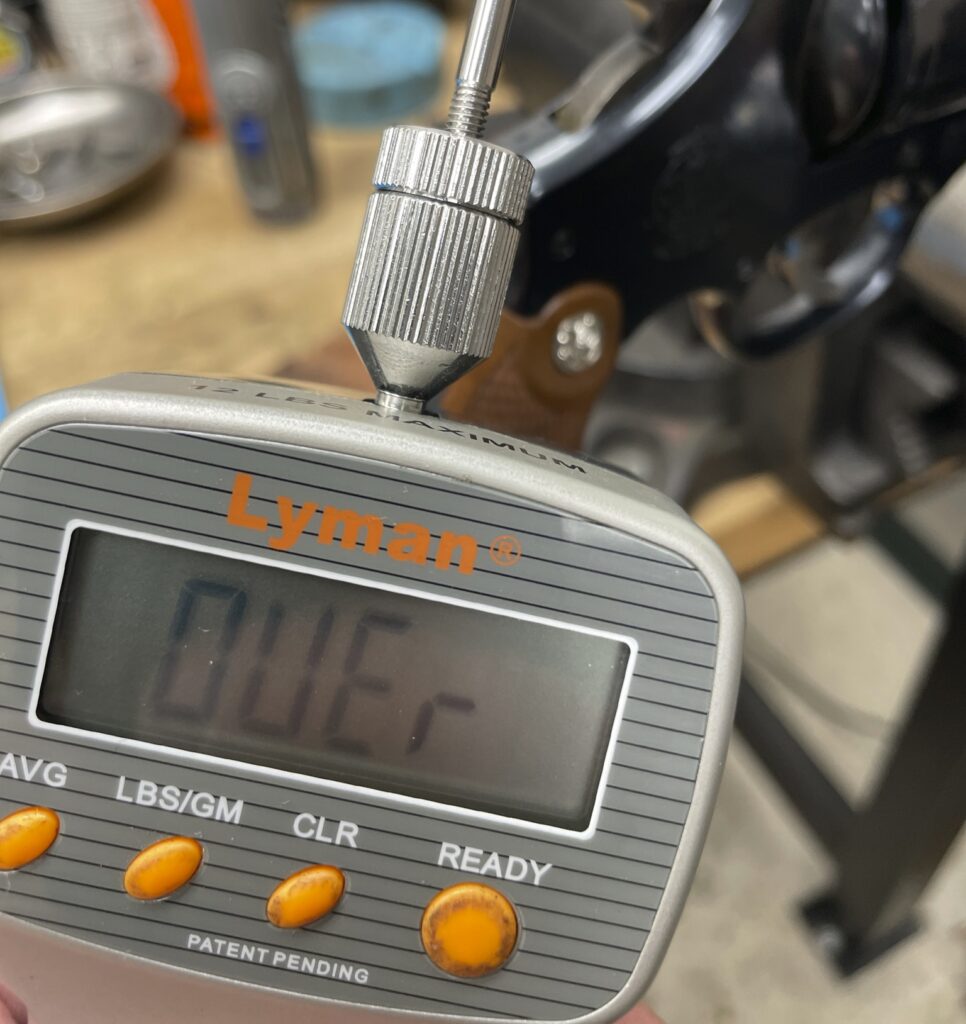
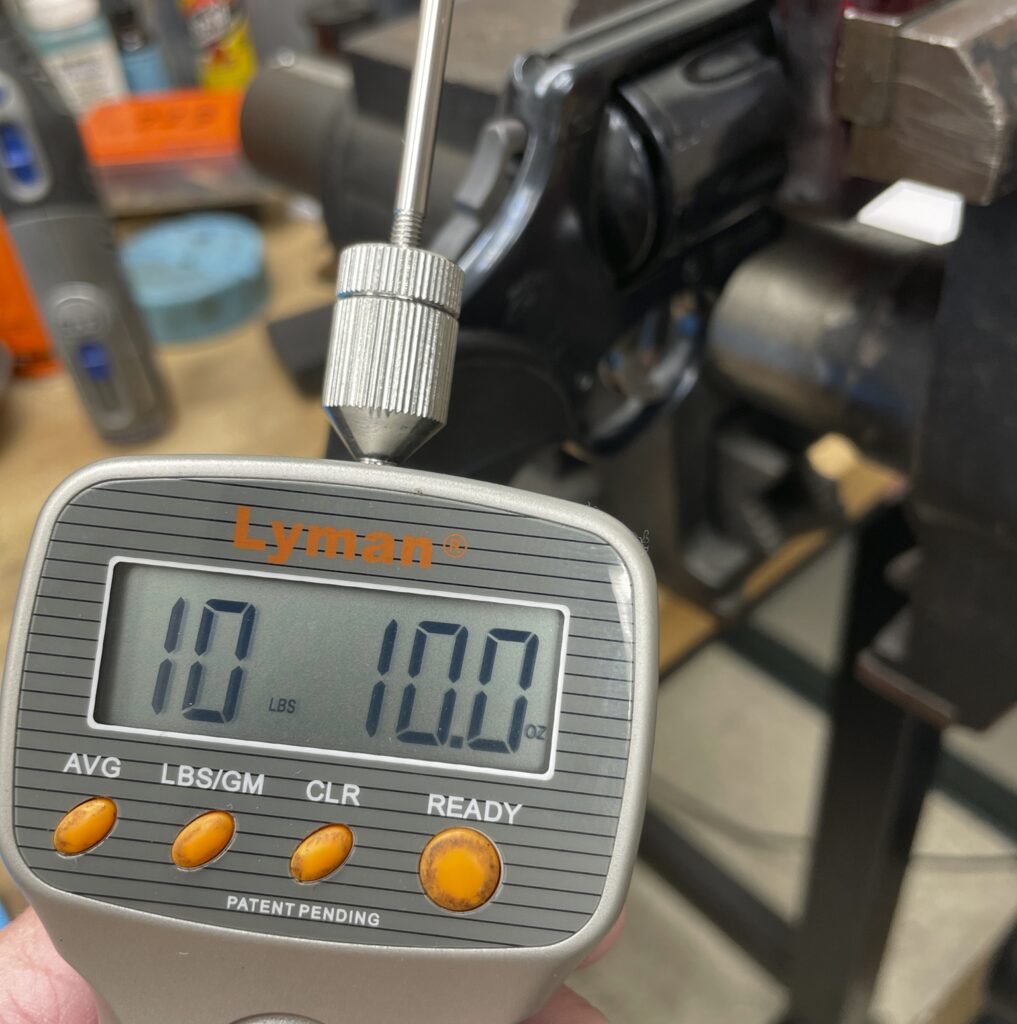
With the OEM rebound spring in place and a properly-tightened, full-length strain screw, the gun was reliable with a variety of ammunition (mostly Federal HST and 45D). It didn’t matter whether the ammunition was chambered with a half-moon clip, or inserted directly into the chambers (which slightly increased the headspace—something that could negatively impact reliability), the RevUp Action hammer delivered enough energy to pop the primer every time.
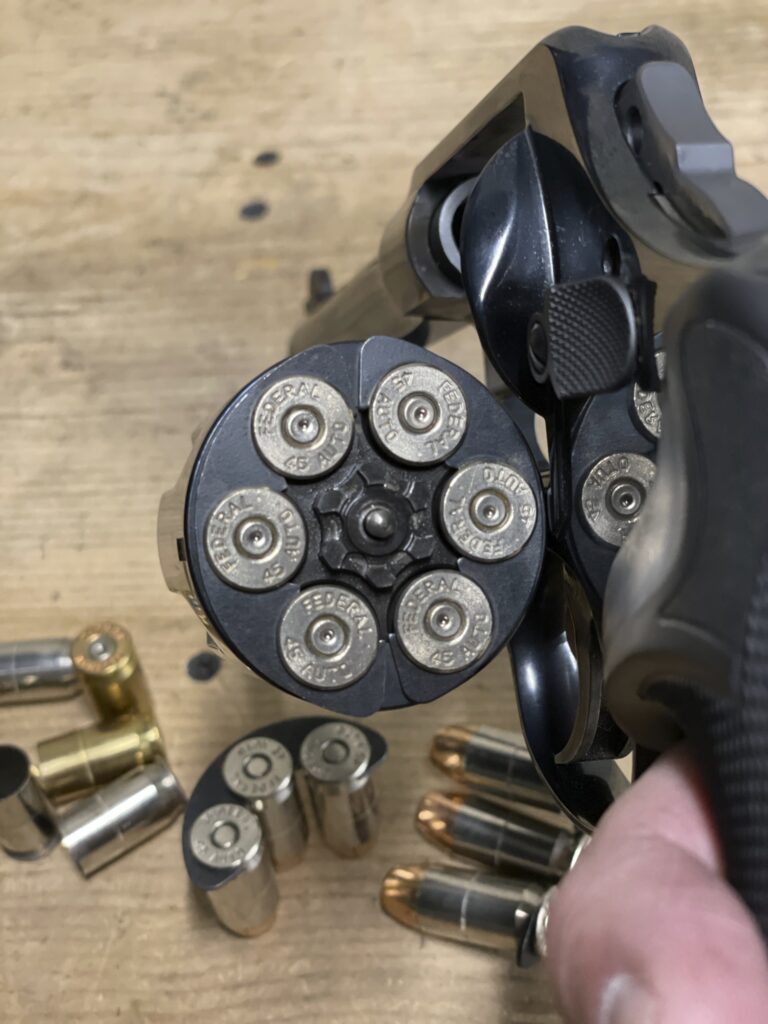
For grins, Dean tried using some of the reduced weight rebound springs to see how much he could reduce the double action pull weight. Using these lighter springs allowed him to achieve a double action pull weight of 8.5 pounds, but the reduced power rebound springs (ranging from 11 to 15 pounds) didn’t provide enough energy to reset the trigger reliably, so a return to the 18-pound, OEM spring was required.
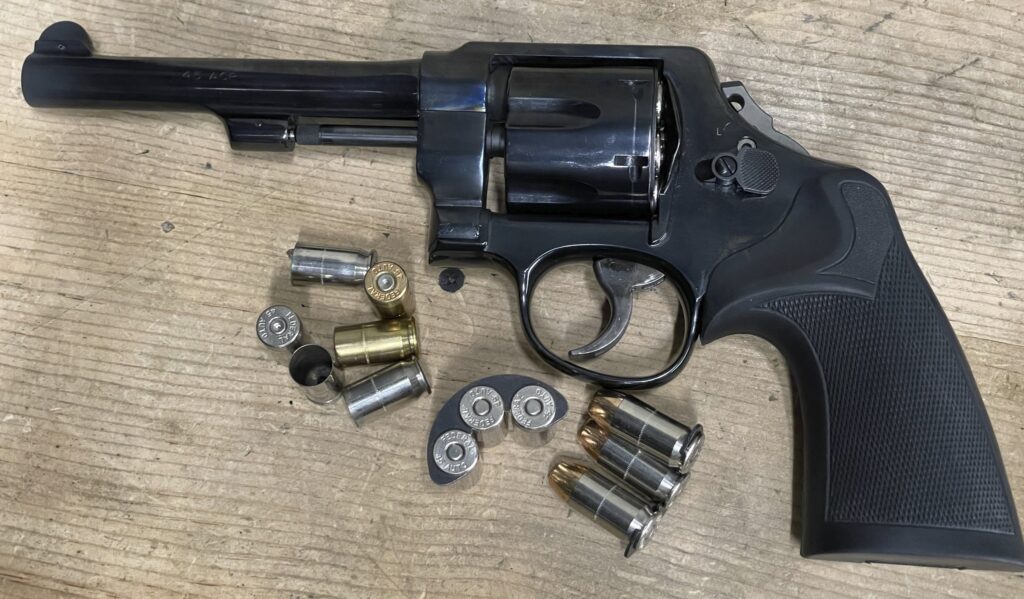
MODEL 327 RESULTS
The Model 327 used in this test was not stock. The Smith & Wesson Performance Center had installed a Ron Power rib mainspring, which incorporates a bend at the mainspring’s neck, and a rib down the center of the mainspring, for its entire length, to improve the trigger pull. This modification resulted in a smooth, 11 to 12-pound double action trigger pull.
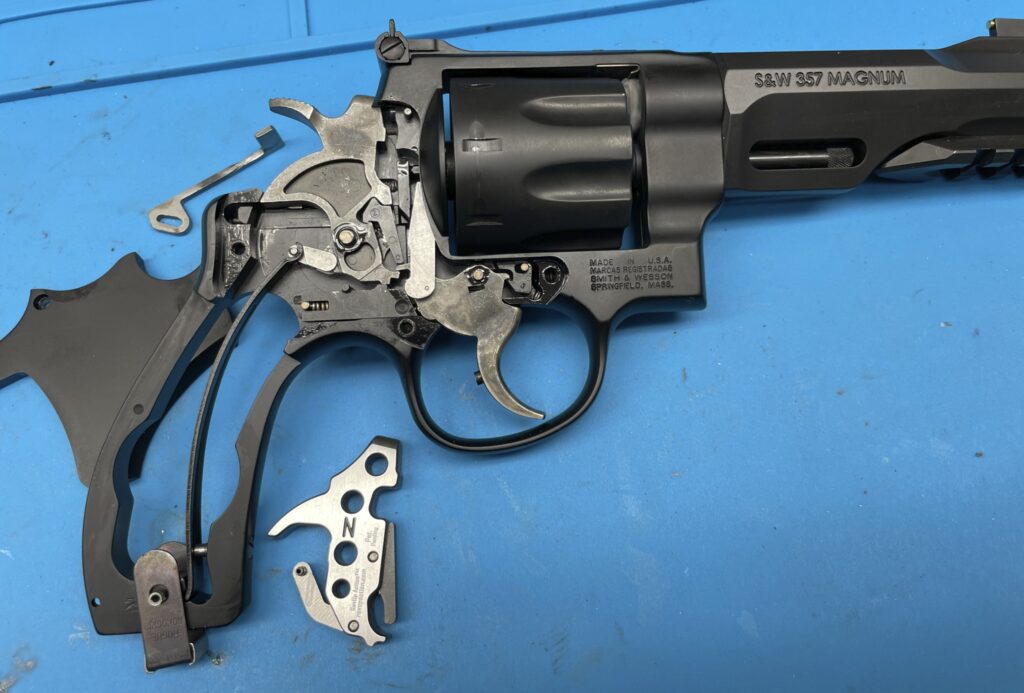
With the RevUp Action hammer and OEM rebound slide spring installed, the double action pull on this gun dropped to 10.5 pounds, showing an amazing consistency with the other hammer in the Model of 1917. The RevUp Action hammer provided 100% reliable ignition with Speer Gold Dot in .38 Special +P and .357 Magnum.
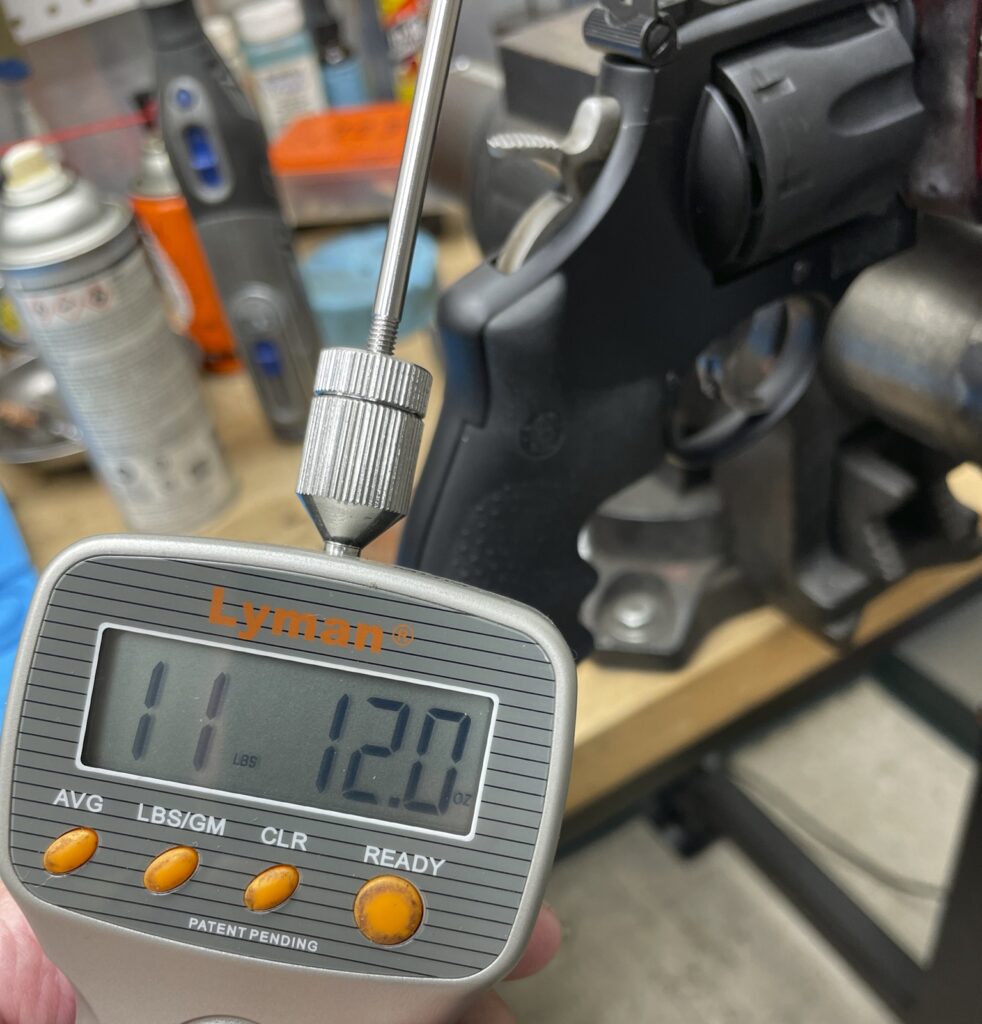
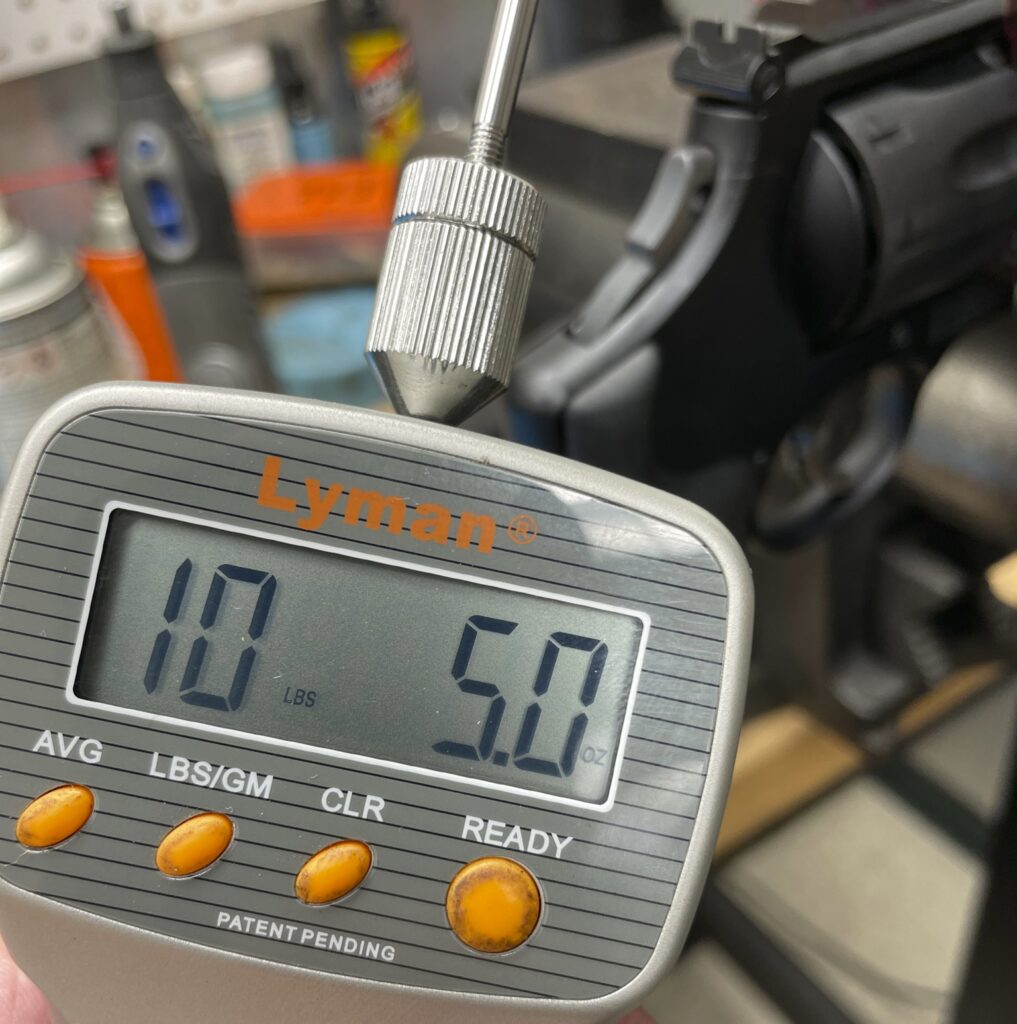
EVALUATION
While the reduction in the weight of pull achieved by the RevUp Action hammer is significant, it’s the other qualities of the design that truly make it unique. The RevUp Action hammer creates a double action pull that really has to be experienced, to appreciate it, because you’ve never felt anything like it before, on a revolver.
In fact, Dean struggled to describe the way it felt, when he explained it to Mike on the phone. “It’s not enough to say, ‘the trigger gets lighter as you pull it,’ because that doesn’t adequately explain the sensation,” he said. “It’s just hard to describe how superior this trigger pull is, without actually feeling it yourself.”
One of Dean’s targets showed the results of a rapid fire, double action string that was shot at 25 yards. Although the tight group spoke to the improved quality of the trigger pull, even that was insufficient to properly explain the difference in the feel of the action. “You really can’t understand, until you shoot it,” said Dean. “I can do things with this setup that I can’t with others.”
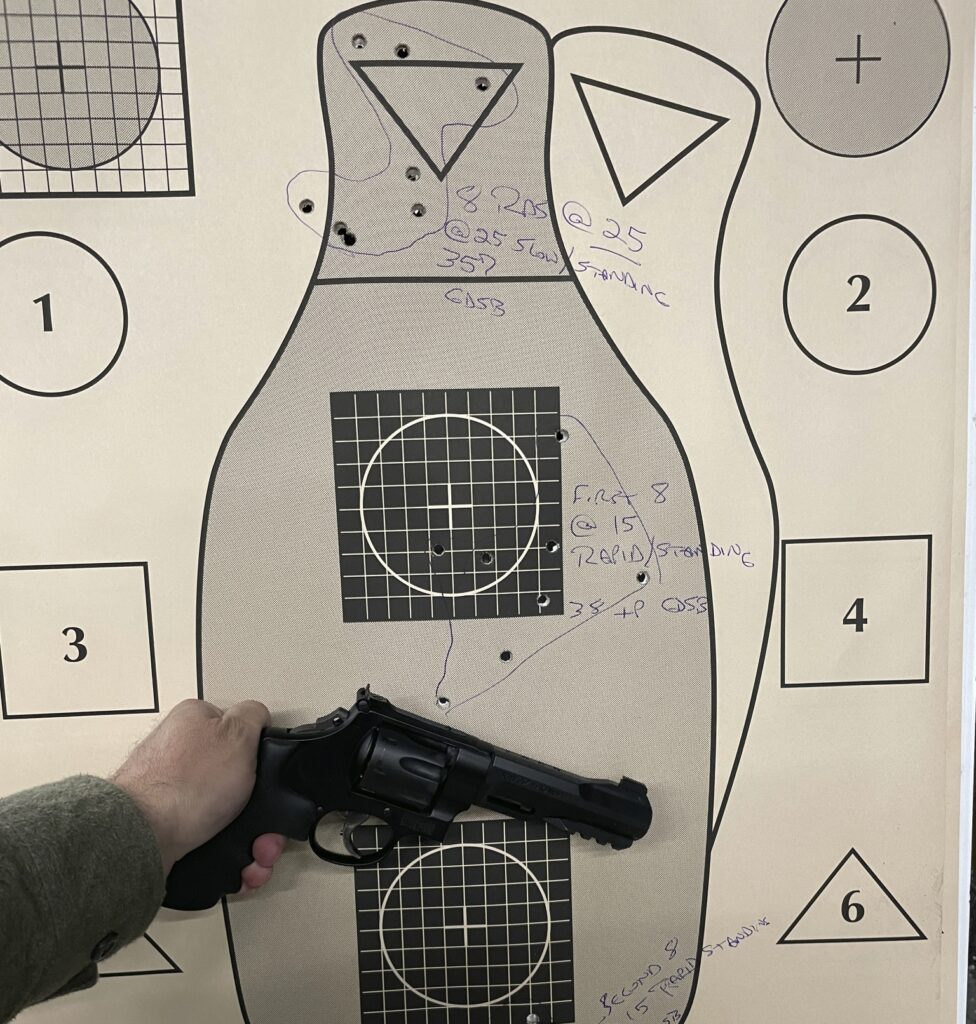
You could achieve peak pull weights similar to those provided by the RevUp Action hammer with some careful polishing and a spring kit, but you wouldn’t change the fundamental behavior of the action—the trigger pull weight would still rise sharply to a peak, plateau for a bit, then bump up and down in a slight, overall rise, before the sear finally released. Only the RevUp Action hammer will start you at the peak weight, then steadily decrease to the single action weight as the trigger moves to the rear.
REVUP FOR DUTY USE?
Dean noted that the 10.5-pound RevUp Action pull weight is perfect for duty use, when coupled with the OEM rebound slide spring and strain screw. The pull weight is heavy enough to provide some protection against a stress-induced negligent discharge, but is light enough that it won’t be a detriment to trigger control. Furthermore, since the pull weight decreases as you stroke the trigger, the shooter should be able to achieve higher degrees of precision with the more easily-managed trigger.
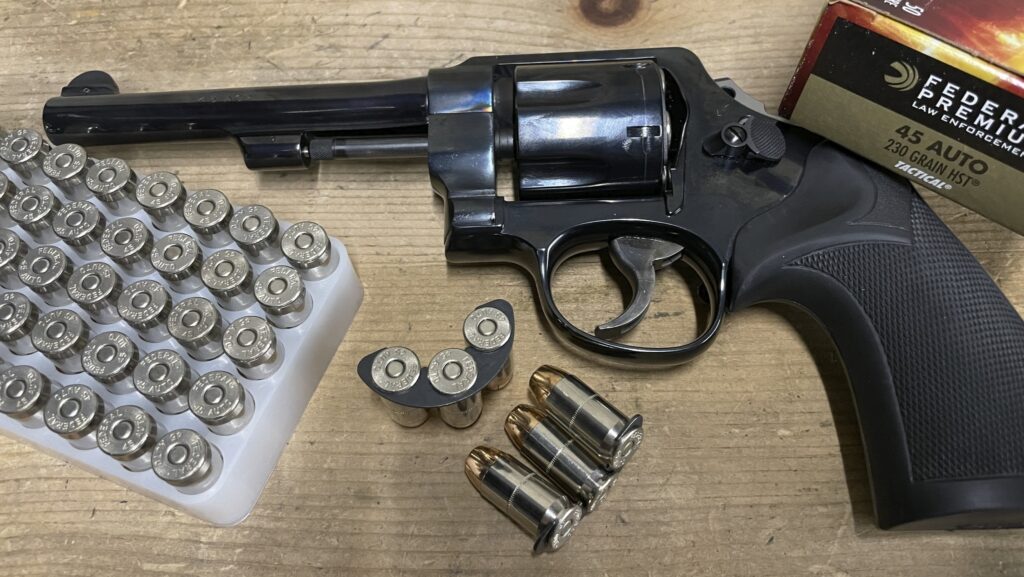
In fairness though, while Dean felt the RevUp Action hammer delivered the very best S&W trigger pull he’d ever tried, there are still some obstacles to consider, for duty or CCW use.
To begin with, the RevUp Action hammer is quite expensive, running you about what a very high-end trigger job would cost, and you might require a gunsmith to install it, because of the inherent variation in factory tolerances (it’s not a true, “drop-in” kit). The expense might be appropriate at the highest levels of competition, where significant money is routinely spent to achieve small edges in performance, but it might be less justifiable for duty use, where minor equipment advantages are usually outweighed by more important factors, such as time, distance, tactics, and luck.
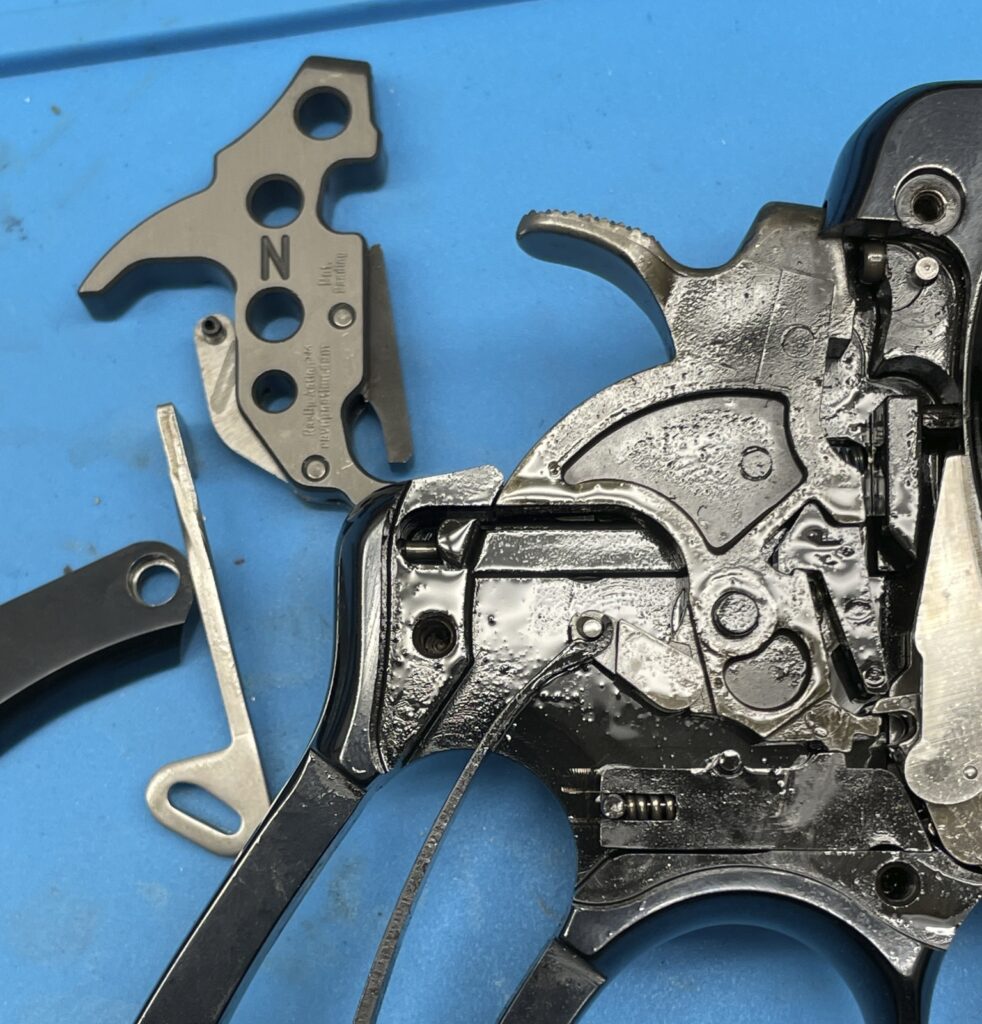
Additionally, the RevUp Action hammer is only available for medium-to-large frame guns with frame-mounted firing pins at the moment, and is not offered for the small frame revolvers that are most commonly carried for defense, these days, or for older, hammer-mounted firing pin designs.
Once again, though, the reader should keep in mind that the RevUp Action hammer was designed for competition use, so it’s not fair for us to judge it in a different context. The product is so compelling, that we’re encouraged to look for other ways we can use it, such as self-defense, but at its heart, this is a competition trigger, and it should be measured by that yardstick. In that sense, the RevUp Action hammer is definitely worthy of your attention, if you want a gun to perform at the highest level.
FUTURE
RevUp Action is still trying to reach a 100-trigger preorder goal, to justify the expense of moving to production. As of this writing, they have reached 75% of their target, and we’re hopeful they will get enough preorders to move forward with the design.
Moore needs to get off the ground with the N-Frame and K/L-Frame models that will constitute the initial launch before he can work on other variants, like a J-Frame, or a K/L/N with a single action sear notch, but one could imagine that it wouldn’t take long for them to follow if the first versions were a commercial success.
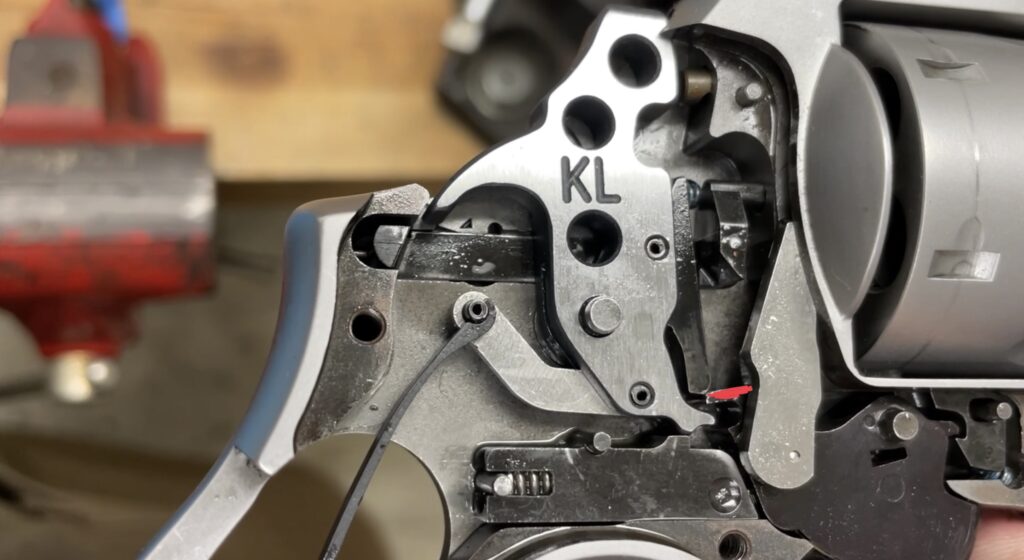
Make sure to check out the RevUp Action website for more information on the product and to place your preorder for one of these kits. Whether you’re a competition shooter, a recreational target shooter, or a defensive shooter that likes the big guns, we really think you’ll be impressed by this latest revolution in hammer designs.
*****
ENDNOTES
-
Our testing of the early-prototype K-Frame hammer occurred in March of 2022. Moore was focused on getting the N-Frame design ready for production throughout the Spring and Summer, but now that the N-Frame work is complete, he’s working on the K/L part again. The K/L-Frame hammer will benefit from the lessons learned during the N-Frame part’s development, and Moore expects to have a perfected K/L part available for us to test, soon. Stay tuned to these pages for updates.

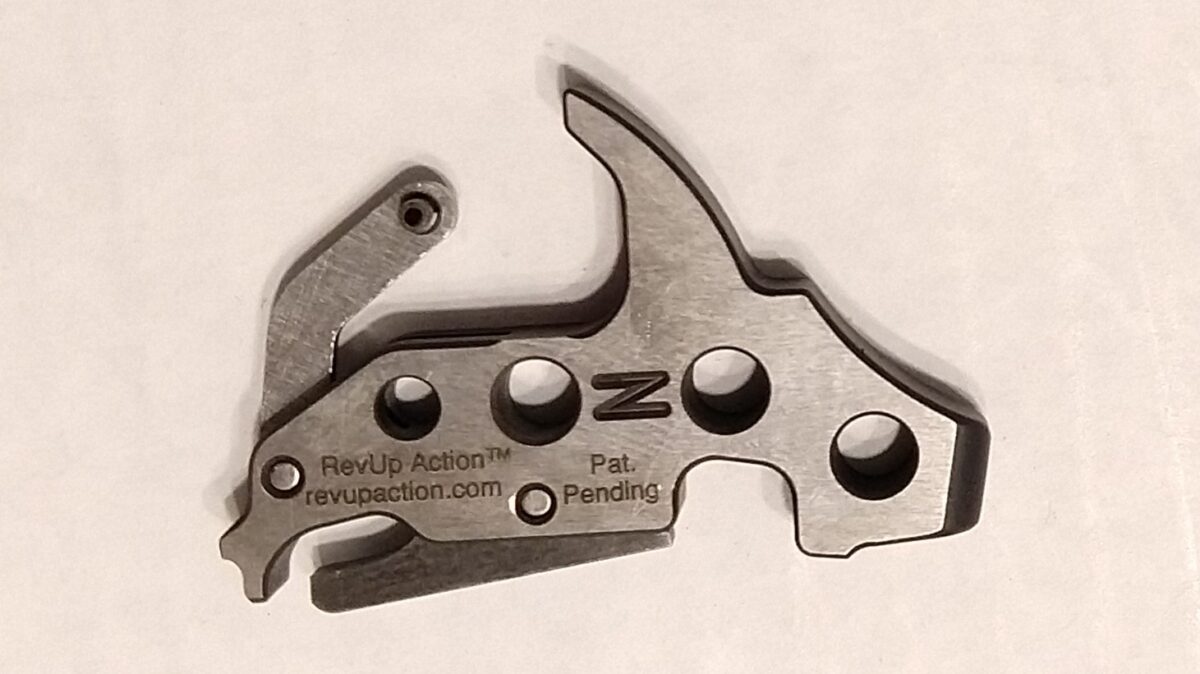
Mike,
This is good stuff. Thank you for including what you did about a self defense gun needing to be reliable, even if you can’t have the bestest, smoothest, etc. gun (my paraphrase).
In my time as a police officer, I’ve seen a lot of, usually young and/or inexperienced officers modify their revolver and later their pistol with the “latest and greatest” only to find that different ammo, time spent in the rain, holster lint, or any of a list of things, make their gun into a non firing, inefficient club. Sometimes people forget that the main thing about a gun your life depends on is that it goes bang, every time you pull the trigger. This doesn’t just apply to the police.
Thanks again for what you do!
BC
Thank you Sir! Yes, the first priority is always reliability!
This design was launched to satisfy the needs of the competition crowd, but if we could harness it for duty use, in a way that the gun was stone cold reliable, wouldn’t that be something special? I’m really excited to see the forthcoming K/L design when it’s ready, and who knows? Maybe we will see an improved J-Frame hammer someday?
Its awesome to see innovation still happening in the wheel gun world. I don’t have a use for this product myself, but hope it is successful, because future iterations or other products inspired by this type of thinking might be just the ticket for my uses.
I’m with you, Greyson. I don’t have a gun that could use this hammer, but I’m super excited to see Moore working on this, because it unlocks a lot of potential for other products.
I can see S&W adapting a similar
design (to not infringe on patent
rights) for its higher end models.
The company would have to decide
if enough people really care and if
it’s cost effective, of course.
Or they could purchase his patent!
May be buying a second K frame this week for a friend who wanted a heavy SD trigger, after many uncomfortable sessions with striker-fired semis. She kept trying to buy our S&W 64, an old LEO trade-in.
Our friend is a martial artist and calm under stress but still felt that “when I take a shot, I want that extra time to say NO to myself.” Thus very light triggers bother her, though I do not mind them.
In my Kimber K6S the new spring kit and firing pin you folks reviewed recently give me peace of mind, reliable ignition, and a pound lighter trigger.
I can’t argue with a “thinking trigger.” She sounds like she has her mind in the right place!
Glad you found the TK Custom parts met your approval. I feel better with their firing pin in my guns.
With the understanding that this new “action hammer” is geared towards competition shooters, as a life-long civilian, is my rather uneducated concern about modifying the action of a self-defense firearm warranted? I’ve been tempted to install spring kits in my J-frames, but don’t want to give a prosecutor extra ammo (pun intended) should I need to defend myself in court. Should an action hammer ever be offered for J-frames, it would be tempting, but…
Any opinions? Am I nuts?
Bill, there’s certainly a variety of opinions on that topic.
Friend Mas Ayoob is probably the leading proponent of keeping trigger systems stock, or nearly stock, on a self defense handgun. He’s had a few experiences defending people against bogus “hair trigger” charges, and they have shaped his views on it.
Even Mas isn’t an absolutist, though. He doesn’t discourage changes that make a trigger smoother, and enhance accuracy or reliability. He’s even OK with some weight of pull reductions, as long as they don’t take a trigger below generally-accepted industry standards. Those standards seem to be in the neighborhood of 4.5# for SA, 5.5# for striker-fired, and around 10-12# for DA. Triggers at those weights all seem to be pretty defensible, but if you get much below that, it’s easier for an unscrupulous attorney to argue that you created a “hair trigger” that was dangerous and negligent.
Then there’s the issue of whether or not DA revolvers should be modified to remove SA capability. I think that’s a reasonable precaution, but stop short of suggesting it as necessary. My carry revolver is a Centennial though, so you know what I’ve decided is best for me.
There’s a matter of geography, too. I know that a shooting in my zip code is likely to be handled very differently than it would be in a more pro-2A locale. The courts are more likely to welcome certain arguments, and the juries are more apt to decide a certain way. That should probably be part of the calculus when making these kinds of decisions.
There’s a lot of gray here, and every situation is its own rule. I think folks have to weigh the pros and cons, and come up with their own solution. For me, though, I’m not prone to seek trigger pulls that are substantially lower than factory specs. I’ll have work done to make a trigger smoother, but I’m not particularly interested in shaving pounds off.
While I’m down with the DAO trigger in SD revolvers (which this apparently is), I wish the fetish for spurless hammers would go away. Some of us (meaning me, and who else do I care about?) prefer using holsters with thumb breaks, and a spurless hammer makes them useless. Plus, spurless hammers alter the look of a good revolver, especially the “classic” faux-1917 in this article. (I understand that some people may disagree with me. That’s the great thing about America; you have the right to be wrong.)
Hahaha! I hear ya, 1811. The spurless guns do look a little odd, and I usually prefer to leave the hammer intact, because I like thumb breaks, too. I can see removing the spur for a pocket-carried, or deep-concealment gun, but it seems like most of the belt-carried guns aren’t harmed by leaving the spur intact, especially if you use your thumb to create a makeshift hammer shroud, as part of the drawstroke. For those interested in preserving the ability to do a high-primer check, keeping the hammer is important, too.
Thanks for the detailed response, sir. I prefer letting my heaters smooth out on their own. Here, in the geographical center of the contiguous 48, I think I’d be okay were I to deviate from factory specs, but the times they are a-changin’.
Hey Mike, Thanks for highlighting RevUp Action and what they are doing. I was unaware of them before your post. I wish them all success, I may even contribute to it it by getting on their list for an N frame hammer! It seems like aftermarket companies help steer the boat where it needs to go with respect to performance automobiles and firearms. It’s kind of like wildcat cartridges that become mainstream because they are good enough to do so. The “big boats” would be wise to pay attention to the innovative ideas coming from companies like RevUp Action…
That’s a perfect analogy, Kevin!
Yes, we’d do well to remember that all the features which are now “standard” on 1911s had their roots in small, innovative workshops. Extended thumb safeties, beavertails, enhanced sights, mag wells, fancy hammers and triggers, optics . . . all mainstream now, but they had their roots in places like Moore’s workbench.
This trigger design might be hard to appreciate if you can’t feel it, but I really think it’s something special.
I shoot a modern Colt Python. It has the best DA trigger I’ve ever used and is not going to have the long term timing issues that the originals have. The modern Cobra is the same way. Additionally the Ruger LCR’s have extremely good DA triggers. That said I would be interested in a K/L hammer with a hammer spur for my M69
Brett, this trigger is the “anti-Colt!” The Colt gets heavier, as it is pulled. The RevUp Action trigger gets lighter, as it is pulled. Polar opposites. It would be interesting to compare them side by side, wouldn’t it?
If they get to selling units for J-frames and our RevolverGuy experts are happy with those results, I can guarantee two purchases from me. I never use the SA function on my S&Ws, so losing that along with the hammer spurs would just make them easier to carry.
Have one of these on a SW 929. It is truly unique. I have a couple N frames with really nice triggers , but they can’t touch this. Now to get one for the 686.
Donald, thanks for the feedback on this innovative trigger. It’s good to hear from folks who are using it!